The art of Sculpting in CINEMA 4D allows you to design and refine your models in versatile ways. The structure plays a crucial role here, as it affects how much your model deforms during editing. This guide will introduce you to the fundamental aspects of structure so that you always maintain control over the deformation of your model.
Key insights
- The structure determines how often you need to pass over a spot to achieve the desired deformation.
- A high structure value results in faster outcomes with fewer passes.
- The hardness of the tool affects the efficiency of the deformation.
Step-by-step guide
Before you begin sculpting, it's important to develop an understanding of the basic parameters that you can adjust in the program.
1. Understand the basics of structure
Start with an introduction to the structure. The structure is the value that determines how much your model can deform when you use a sculpting tool. A low structure value requires multiple passes, while a high value provides immediate results.
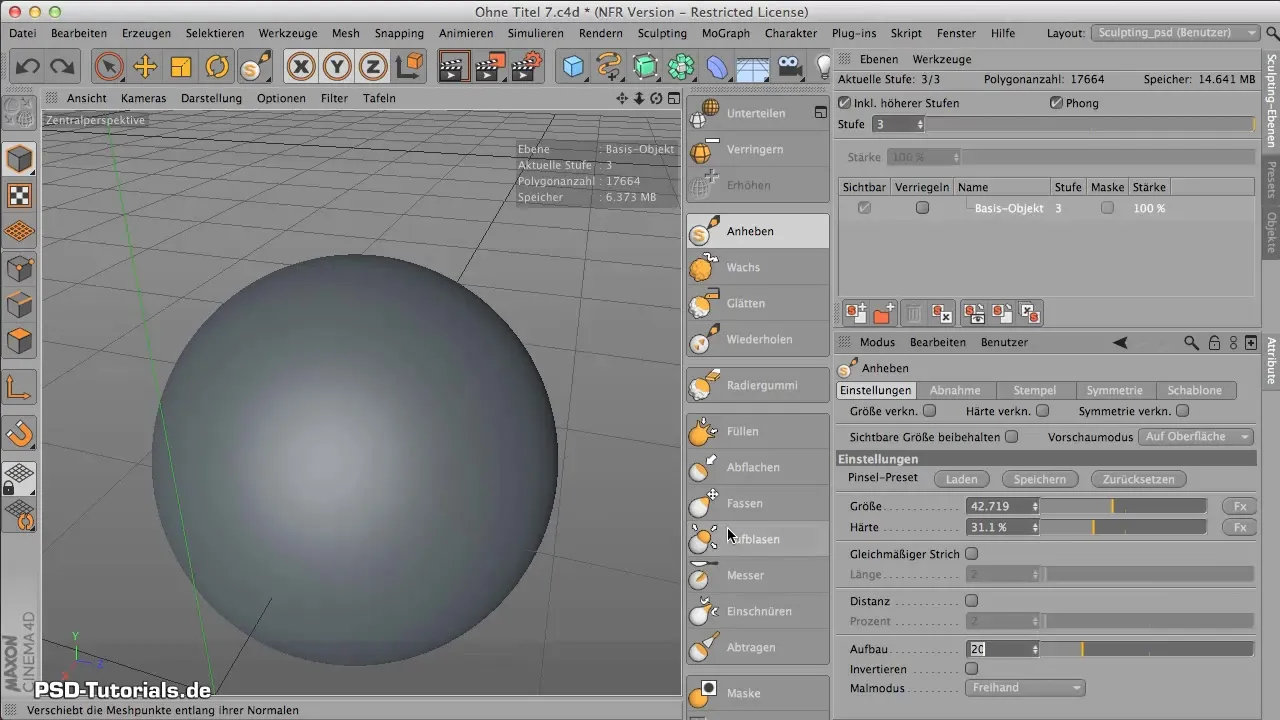
2. Choose tools and set parameters
Select the sculpting tool you want to use and adjust the settings. Start with a structure of 20, a size of 42%, and a hardness of 31%. Pay attention to how the parameters affect the deformation of your model.
3. Compare the effectiveness of different settings
Now begin working with the model. Move the brush over a specific spot to see how the deformation behaves. With your current structure of 20, you will likely need many passes to achieve a noticeable change.
4. Increase the structure for faster results
Increase the structure to 100%. This will show you how much faster and more effectively you can achieve results. Apply the brush again and observe that you reach the full size of the model with fewer passes.
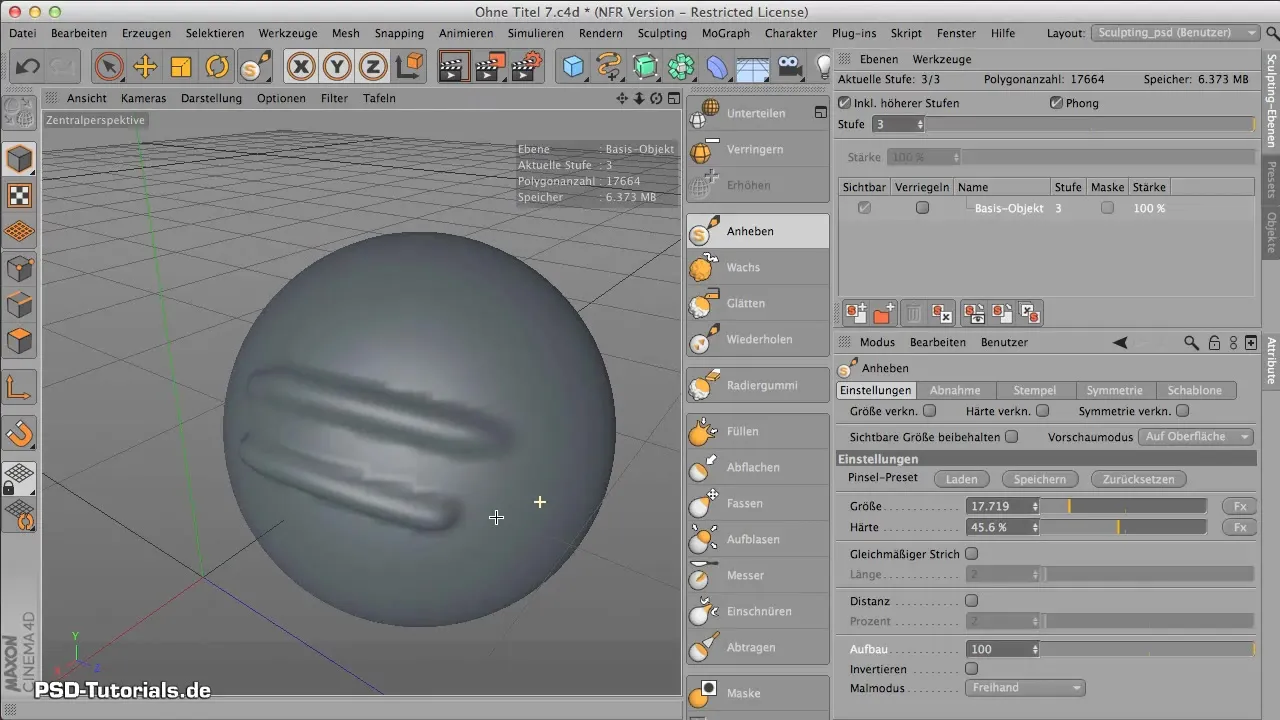
5. Understand the role of hardness
Now change the hardness of the tool and see how the deformation changes. A higher hardness leads to a more pronounced bulging of the model. These parameters complement each other: while the structure influences the number of passes needed, hardness determines the intensity of the deformation.
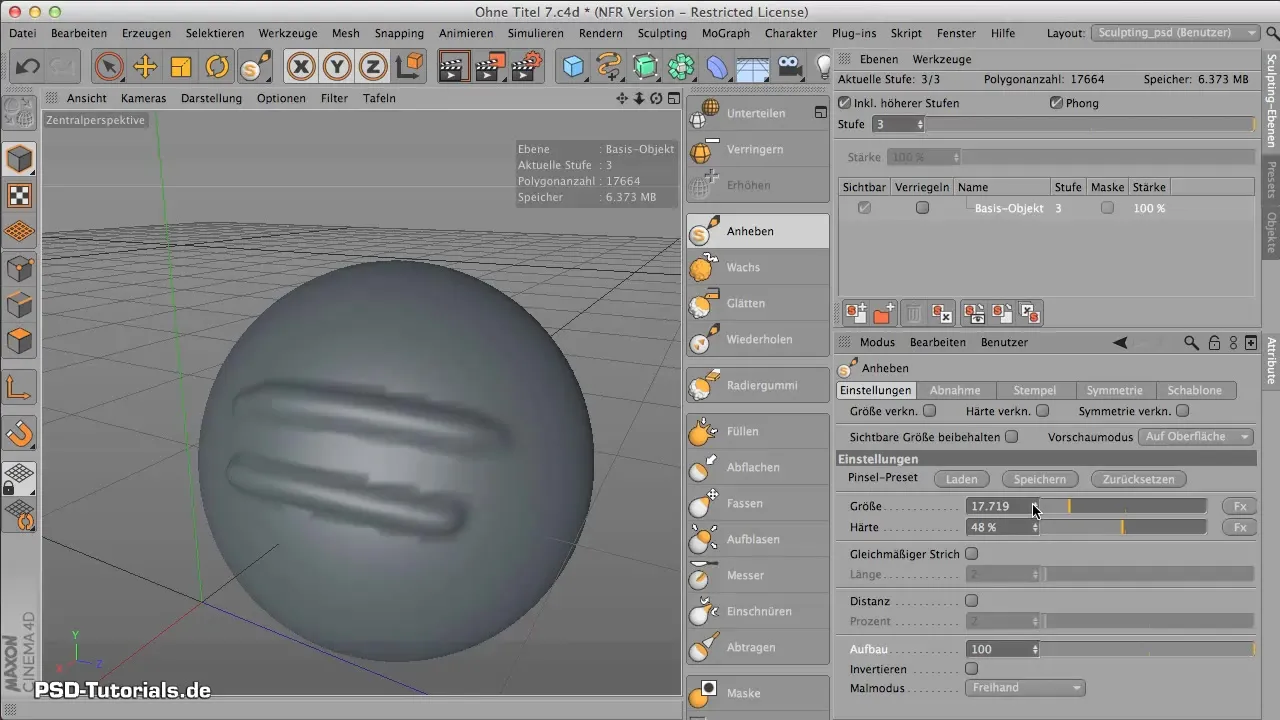
6. Invert deformation
You have the option to not only bulge the deformation but also to indent it. You can achieve this by pressing the Cmd or Ctrl key (depending on your operating system) while using the sculpting tool. Experiment with this technique and observe the changes in your model.
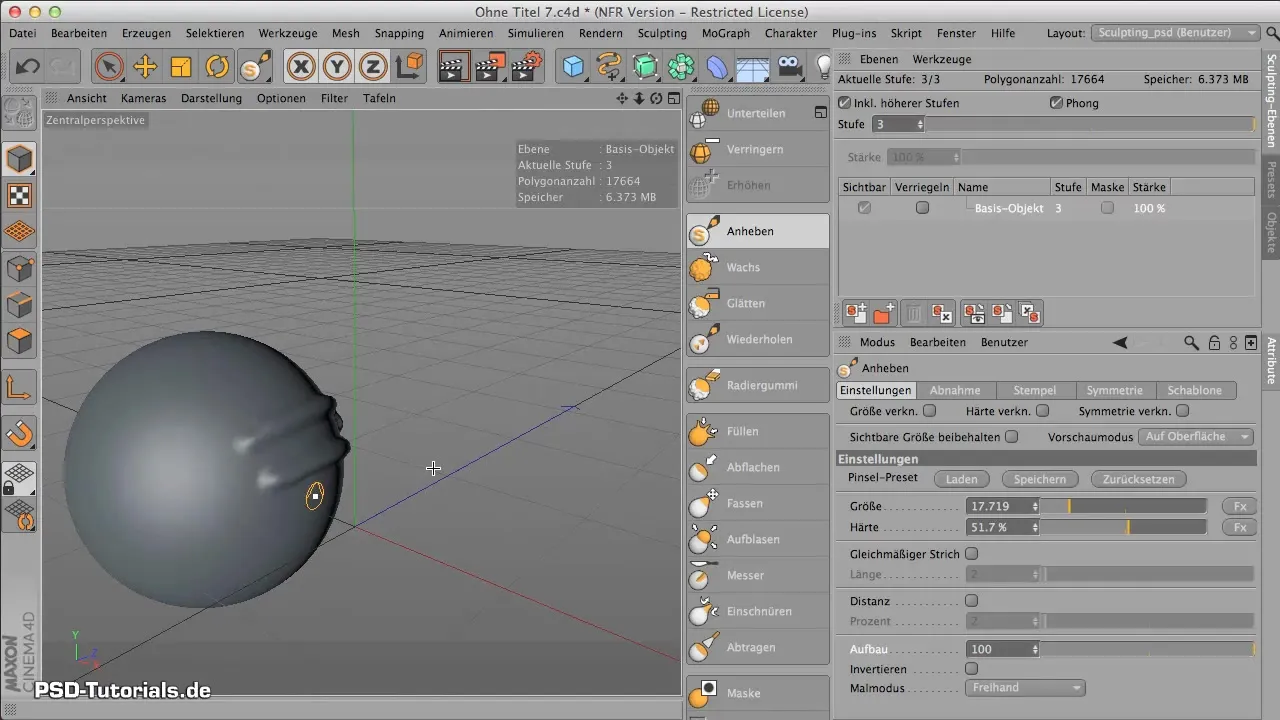
7. Identify issues while modeling
Watch for potential issues that can arise during the sculpting process, such as irregular geometries or overhangs. These can be influenced by the polygon count of your model. It may be helpful to optimize your object by smoothing or finer subdividing.
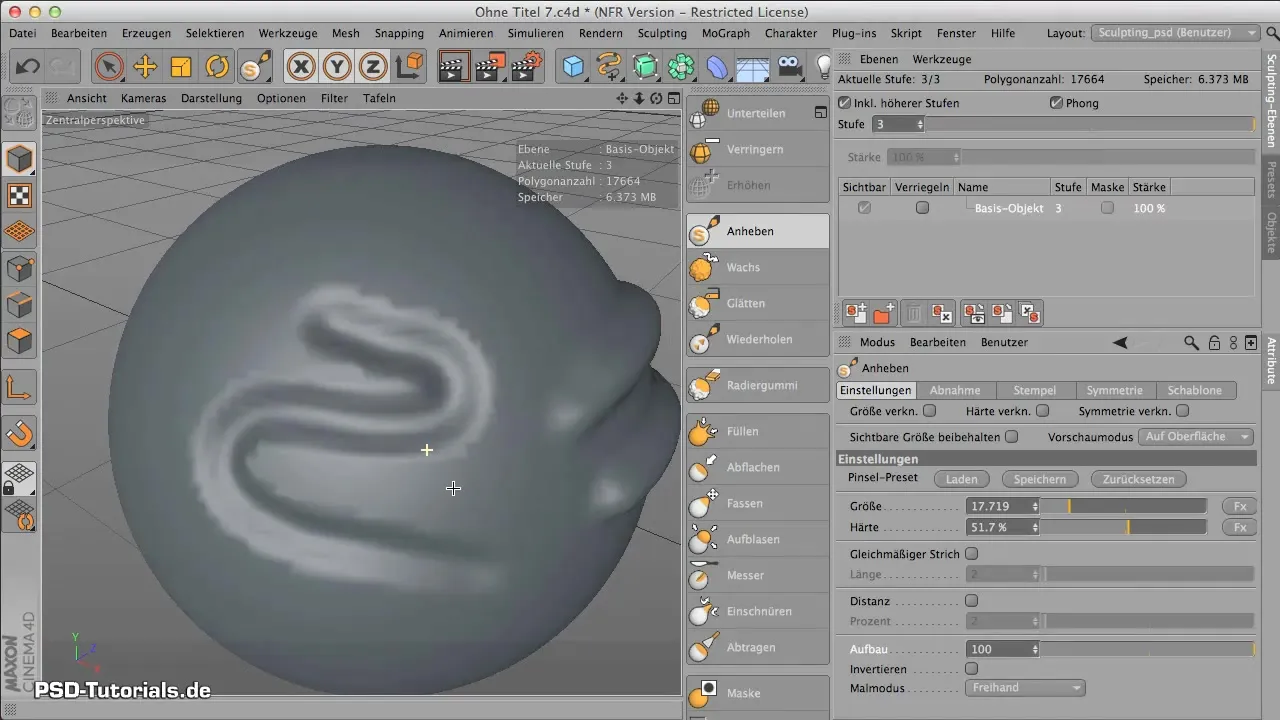
8. Deepening practical knowledge
Before you create more complex models, familiarize yourself with the fundamentals in detail. Proper use of structure and hardness is crucial for achieving high-quality results. In the next practical section, you'll learn how to apply this knowledge in realistic scenarios.
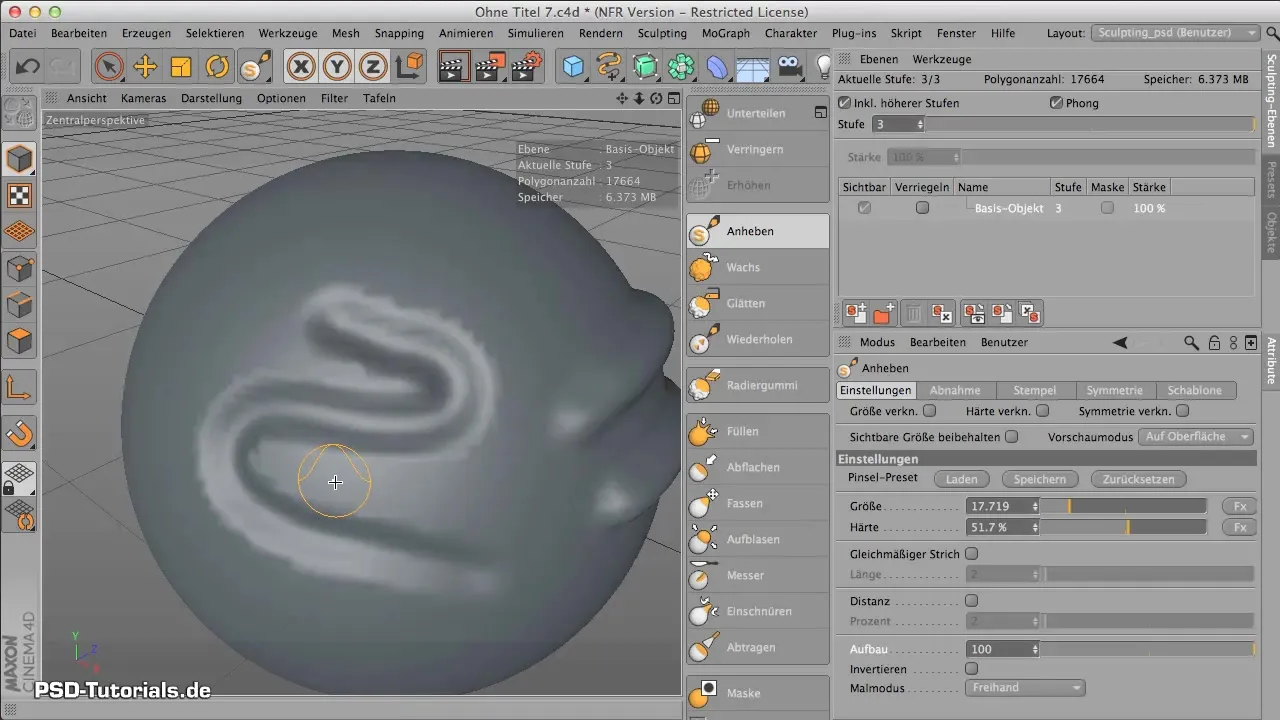
Summary – Basics of structure in Sculpting in CINEMA 4D
To make real progress in sculpting in CINEMA 4D, it is essential to understand structure and its influence on deformation. With the ability to control both structure and hardness, you can effectively design and refine your models.
Frequently Asked Questions
What does "structure" mean in the context of CINEMA 4D?The structure determines how much and how quickly your model deforms when working with sculpting tools.
How can I reverse the deformation?By pressing the Cmd or Ctrl key, you can invert the deformation and dent your model.
How does hardness affect sculpting results?A higher hardness leads to more pronounced deformations, while structure determines the number of necessary passes.


